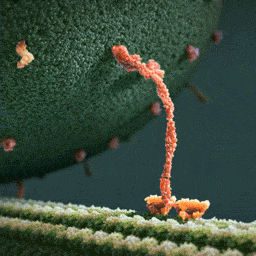
Current brain science is suggesting strong plausibility that the opiate and heroin epidemic will continue to worsen with commercializing and industrializing production and sales of marijuana at levels the likes of tobacco, alcohol and prescription drugs.
With more 21st century marijuana in our communities, opiate and heroin use rises. The brain science is beginning to explain why this is. We are, with marijuana research, where we were in the 1920s and 30s with tobacco research linking smoking to cancer.
Studies are revealing that the cannabinoid-opioid systems of the brain are intimately connected.
In the areas of the brain where cannabinoids bind, opioids bind as well, and if you modify one system, you automatically change the other.
Specifically, there is a functional interaction between the mu and Cb1 receptors of the brain; these receptors commonly exist together on brain cells. The mechanism is not yet well understood; more research is needed. But ultimately cannabinoids and opioids are known to strictly interact in many physiological and pathological functions, including addiction. Overall, evidence confirms a neurobiological convergence of the cannabinoid and opioid systems that is manifest at both receptor and behavioral levels.
What does this mean? We are learning that brain cross-talk between the endocannabinoid and endogenousopioid systems may cause, if there has been early brain exposure to marijuana, changes in the sensitivity to other drugs of abuse such as heroin.
Specifically, the sensitivity may be blunted, which would cause a greater risk for abuse and addiction. This new science supports the plausibility that a person who uses marijuana as a teenager may be increasing his/her risk of opiate addiction later in life. For example, a 20 year old who takes an opiate pain killer for a skiing injury or wisdom tooth removal may become much more at risk of becoming addicted to that pain killer as a result of his or her earlier marijuana use – no matter how insignificant that earlier use may seem. To be clear, this does not mean every teen marijuana user will be challenged with opioid addiction when they take an opiate-based pain killer later in life, as certainly, not every cigarette smoker ends up with lung cancer. Nor does this remove the enormous accountability opioid medications have in the current opiate crisis. It does put some teeth behind that old-school term “gateway drug” as now there is clear scientific evidence of a neuropathway link between opioids and cannabinoids in the brain. Perhaps “pathway drug” is a more accurate term.
The opioid-marijuana brain cross talk is very real and the newest research shows very important experimental evidence on “epigenetics.” A study in rodents showed that somehow, sperm or ova evade genetic cleansing during reproduction and epigenetic modifications triggered by THC are carried forward to the next generation. These changes were produced by THC exposure during adolescence, and yet persisted during reproduction in adulthood long AFTER exposure ended. The research needs to be reproduced in humans but there are others studies on trans-generational effects of other drugs in humans that appear to be consistent with discoveries in rodents.
This research is indicating that with more 21st century marijuana use, we are not only exposing more people to a serious decline in cognitive & mental-health functioning, but we conceivably are also priming populations for more opiate addiction and brain changes. And alarmingly, this priming can take place in utero, even if marijuana use ceases prior to childbearing years.
So frankly, it may not be a coincidence that the states with highest rates of youth marijuana use are also experiencing a soaring heroin epidemic – a trend we are seeing rise across the United States.
This science-based possibility that marijuana exposures in the brain are a foundational feature of the opiate addiction crisis deserves to be weighed heavily in the current decision-making process in how best to change marijuana law – especially given our nation’s tobacco history and tobacco’s impact on health and healthcare costs.
We will learn more about all of this opioid-cannabinoid brain connection, and very soon. With what this science is revealing, if it takes 50 years like it did with tobacco to confirm smoking cigarettes causes lung cancer, our species may be facing a profound and permanent decline in cognitive functioning.
Those in the field of substance abuse and drug use prevention are grateful to our esteemed researchers in Massachusetts and throughout our nation working diligently every day to not only figure out this opioid-cannabinoid neuropathway link, but to explain it to the rest of us so we begin to truly understand what is at stake as the marijuana lobby pushes for full government protection to engineer, produce, market and sell marijuana products in every community for recreational use, like tobacco.
___
By Heidi Heilman, Founder and CEO Massachusetts Prevention Alliance (MAPA); Founder and CEO, Edventi
With special thanks to Dr. Bertha Madras, Dr. Sion Harris, and Dr. Sharon Levy for their work in translating the complexities of the latest brain science.
___
References (partial list of a lengthy list)
1. Ellgren M, Spano SM, Hurd YL. Adolescent cannabis exposure alters opiate intake and opioid limbic neuronal populations in adult rats. Neuropsychopharmacology. 2007 Mar;32(3):607-15
2. Spano MS, Ellgren M, Wang X, Hurd YL. Prenatal cannabis exposure increases heroin seeking with allostatic changes in limbic enkephalin systems in adulthood. Biol Psychiatry. 2007 Feb 15;61(4):554-63.
3. Ellgren M, Artmann A, Tkalych O, Gupta A, Hansen HS, Hansen SH, Devi LA, Hurd YL. Dynamic changes of the endogenous cannabinoid and opioid mesocorticolimbic systems during adolescence: THC effects. Eur Neuropsychopharmacol. 2008 Nov;18(11):826-34.
4. DiNieri JA, Wang X, Szutorisz H, Spano SM, Kaur J, Casaccia P, Dow-Edwards D, Hurd YL. Maternal cannabis use alters ventral striatal dopamine D2 gene regulation in the offspring. Biol Psychiatry. 2011 Oct 15;70(8):763-9.
5. Spano MS, Ellgren M, Wang X, Hurd YL. Prenatal cannabis exposure increases heroin seeking with allostatic changes in limbic enkephalin systems in adulthood. Biol Psychiatry. 2007 Feb 15;61(4):554-63.